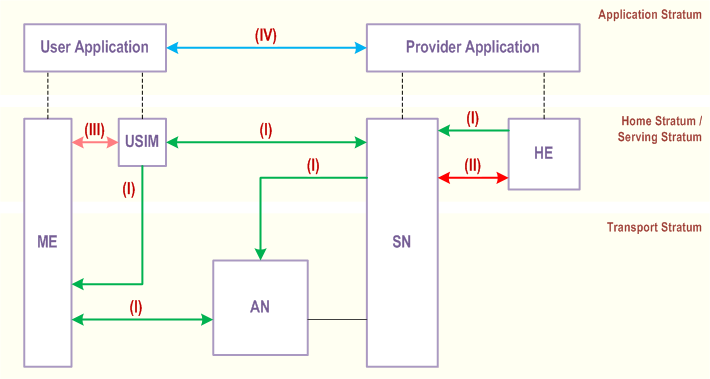Content for TS 33.102 Word version: 18.0.0
4 Overview of the security architecture p. 13
Figure 1 gives an overview of the complete 3G security architecture.

Five security feature groups are defined. Each of these feature groups meets certain threats and accomplishes certain security objectives:
- Network access security (I): the set of security features that provide users with secure access to 3G services, and which in particular protect against attacks on the (radio) access link;
- Network domain security (II): the set of security features that enable nodes in the provider domain to securely exchange signalling data, and protect against attacks on the wireline network;
- User domain security (III): the set of security features that secure access to mobile stations;
- Application domain security (IV): the set of security features that enable applications in the user and in the provider domain to securely exchange messages;
- Visibility and configurability of security (V): the set of features that enables the user to inform himself whether a security feature is in operation or not and whether the use and provision of services should depend on the security feature.
![Copy of original 3GPP image for 3GPP TS 33.102, Fig. 2: Overview of the ME registration and connection principles within UMTS for the separate CN architecture case when the CN consists of both a CS service domain with evolved MSC/VLR, 3G_MSC/VLR, as the main serving node and an PS service domain with evolved SGSN/GGSN, 3G_SGSN and 3G GGSN, as the main serving nodes (Extract from TS 23.121 [4] - Figure 4-8)](../img/tinv-33-102-2.gif)